Restart of Europe after Last Ice Age-I Haplogroup 25 kyr continuity-The ‘Latin’ (Indo) Europeans-Igor M. D’iakonov – Colin Renfrew-Kalevi Wiik-Gray&Atkinson
-
=> 30,000 years ago (in the Middle East); E1b1b => 26,000 years ago (in southern Africa); I => 25,000 years ago (in the Balkans); R1a1 => 21,000 years ago (in southern Russia); R1b => 20,000 yrs ago (around the Caspian Sea or Central Asia); G => 17,000 years ago (between India and the Caucasus); I2 => 17,000 years ago (in the Balkans); J2 => 15,000 years ago (in northern Mesopotamia); I2b => 13,000 years ago (in Central Europe); N1c1 => 12,000 years ago (in Siberia); I2a => 11,000 years ago (in the Balkans); R1b1b2 => 10,000 years ago (north or south of the Caucasus); E-V13 => 10,000 years ago (in the Balkans); I2a2 => 7,500 years ago (in the Dinaric Alps); I1 => 5,000 years ago (in Scandinavia)
en.wikipedia.org/wiki/Last_glacial_period The last glacial period was the most recent glacial period within the current ice age occurring during the last years of the Pleistocene, from approximately 110,000 to 10,000 years ago.[1] During this period there were several changes between glacier advance and retreat. The maximum extent of glaciation was approximately 18,000 years ago.
upload.wikimedia.org/wikipedia/commons/e/e4/Last_glacial_vegetation_map.png
Northern Europe was largely covered by ice, the southern boundary of the ice sheets passing through Germany and Poland. This ice extended northward to cover Svalbard and Franz Josef Land and eastward to occupy the northern half of the West Siberian Plain, ending at the Taymyr Peninsula. It dammed the Ob and Yenisei rivers, forming a West Siberian Glacial Lake. Permafrost covered Europe south of the ice sheet down to present-day Szeged. Ice covered the whole of Iceland and almost all of the British Isles but southern England. Britain was no more than a peninsula of Europe, its north capped in ice, and its south a polar desert.
en.wikipedia.org/wiki/File:Post-Glacial_Sea_Level.png 130m in the last 20.000yrs, –8 to –6ky from –15 to –3m deep.
history.earthsci.carleton.ca/harvey/genealogy/dnartpatterson.htm Map shows Palaeolithic Europe 18,000 years ago in the grip of the last ice age. Glacial 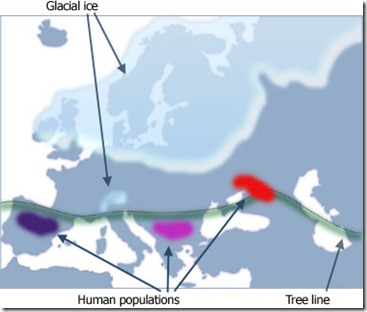 ice 2km thick covers much of Northern Europe and the Alps. Sea levels are approx. 125m lower than today and the coastline differs slightly from the present day. For example, Britain and Ireland would have been connected to continental Europe (not shown on map). The air would have been on average 10-12 degrees cooler and much more arid. In between the ice and the tree line, drought-tolerant grasses and dunes would have dominated the landscape.
ice 2km thick covers much of Northern Europe and the Alps. Sea levels are approx. 125m lower than today and the coastline differs slightly from the present day. For example, Britain and Ireland would have been connected to continental Europe (not shown on map). The air would have been on average 10-12 degrees cooler and much more arid. In between the ice and the tree line, drought-tolerant grasses and dunes would have dominated the landscape.
By 12,000 Y BP the ice has retreated and the land became much more supportive to life. Many animal species returned to inhabit the land.  The three groups of humans had taken refuge for so long that their DNA had naturally picked up mutations, and consequently can be defined into different haplogroups. As they spread from these refuges, Haplogroups R1b, I and R1a propagated across Europe. The three groups of humans had taken refuge for so long that their DNA had naturally picked up mutations, and consequently can be defined into different haplogroups. As they spread from these refuges, Haplogroups R1b, I and R1a propagated across Europe.
The three groups of humans had taken refuge for so long that their DNA had naturally picked up mutations, and consequently can be defined into different haplogroups. As they spread from these refuges, Haplogroups R1b, I and R1a propagated across Europe. The three groups of humans had taken refuge for so long that their DNA had naturally picked up mutations, and consequently can be defined into different haplogroups. As they spread from these refuges, Haplogroups R1b, I and R1a propagated across Europe.
- Haplogroup R1b is common on the western Atlantic coast as far as Scotland.
- Haplogroup I is common across central Europe and up into Scandinavia.
- Haplogroup R1a is common in eastern Europe and has also spread across into central Asia and as far as India and Pakistan.
It is believed that these people changed from hunter-gatherers to farmers in southeastern Europe about 8,000 years ago and in Britain about 4,000 years ago.
www.davidduke.com/general/could-a-male-shortage-during-the-last-ice-age-explain-why-whites-dont-all-look-alike In other animals, bright colors are usually due to sexual selection. Rare-color advantage has been reported in humans. But why is hair and eye color so much more diverse in Europe than elsewhere? Perhaps because sexual selection was much stronger among ancestral Europeans than in other human populations. The European steppe-tundra was distinctive in another way. It took in an area that covers almost the same area where hair and eye color is today most diverse. Could this be an imprint left on the human genetic landscape by sexual selection?
herkules.oulu.fi/isbn9514255364/html/x731.html
The last glaciation in Europe began some 120 000 years ago, being coldest about 20‐18 000 years ago, when the ice covered the Europe to approximately 50N. Warming began some 13 000 years ago, and the ice started to retreat. During the last 8 000 years, the climate has been much the same as today (Webb & Bartlein 1992). Even during the coldest periods, three regions in the Mediterranean area had temperate climates; the Iberian and Italian peninsulae, and the Balkans (Bennetet al. 1991). When the temperature decreased, the northern populations of many species became extinct, but the species may have survived during hostile times in these Mediterranean refugia. When the ice began to retreat, the refuge populations began to expand north (Taberlet et al. 1998). In the European continent, several geographical features affected the expansion possibilities or routes. Europe itself is a large peninsula connected to Asia. The Mediterranean Sea in the south forms a barrier, as well as several mountains in Europe (the Alps, the Pyrenees and the Balkans). Taberlet et al. (1998) analysed 10 taxa to elucidate general colonisation routes in Europe. They found that the likely colonisation routes exhibited some similarities; northern regions were generally colonised from the Iberian and Balkan refugia, and Italian lineages were often isolated because of the Alpine barrier.
http://www.absoluteastronomy.com/topics/Prehistoric_Europe
http://www.eupedia.com/europe/neolithic_europe_map.shtml
I => 25,000 years ago (in the Balkans); I2 => 17,000 years ago (in the Balkans); I2b => 13,000 years ago (in Central Europe); I2a => 11,000 years ago (in the Balkans); I2a2 => 7,500 years ago (in the Dinaric Alps); I1 => 5,000 years ago (in Scandinavia)
- 18kyr (16kyr BC) – Maximum Extent of Last Ice Age
- 12kyr (10kyr BC) ice has retreated start of new colonisation of Europe from the 3 resistance pockets : I from Balkans, R1A from the north of Black Sea
- 10kyr (8kyr BC) – End of Last Ice Age. Regarding R1B I see 2 theories. 1) R1B spread from resistance pocket in Spain. 2) R1B appeared much later coming from north of Iran, Spain resistance pocket associated by Maciamo/Eupedia with smaller La Almagra Culture, much smaller E-M81 population which was not big enough to spread North.
- 8kyr (6kyr BC) same climate as today – arrival of neolithic J2 farmers from Middle east in the Balkans
- 7kyr (5kyr BC) Cucuteni Culture and Vinca Culture / Script
en.wikipedia.org/wiki/Old_European_script; en.wikipedia.org/wiki/Tartaria_tablets
- 5500BC most of Europa was I haplogroup! R1A was only in the North of Black Sea while R1B was still in Asia. The neolithical farmers from Middle East E-V13 and J2 had at that time significant influence in Balkans but genetically, ethnically I was still predominant in the Balkans also. Magna Italy (Printed Cardium Pottery Culture) and Magna Dacia (Thessalian Neolithic Culture) have same I2 origin! J2 migrators were small in numbers compared to original I2 populations in the Balkans, J2 had technical and cultural influence but were absorbed by I2
- 4000-3500BC – most of Europe is still I, but R1a is entering Europe through Moldavia, coming round south by the Black Sea. R1a preparing to enter in the Balkans from Turkey.
- 2800-2500BC – R1a is pushing west in Central Europe while R1b is entering Europe thorugh the Balkans. Most Western Europe is covered by Megalithic Cultures with I populations.
- 2500-2000 – Conquest of Western Europe by R1b! Corded Ware Culture in North Germany, Poland, Ukrajna and Russia – R1a.
http://wapedia.mobi/en/File:Germanic_tribes_(750BC-1AD).png What is the link between getae dacians/thracians and germanic people? Same I haplogoup!! Colors for Germanic people map – Settlements before 750 BC, New settlements after 750 BC until 1 AD, New settlements until 100 AD, New settlements after 100 AD. Goths = Getae (Geths)!
racialreality.110mb.com/indo_europeans.html The spreaders of Indo-European languages are traditionally considered to have been blond, blue-eyed Nordic types. However, scientists are not in agreement about the location of the Indo-Europeans’ homeland, much less their original pigmentation, definitive records of which are lacking. One theory finds strong support in modern genetics, which shows today’s Nordics to have comparatively little Indo-European ancestry. The other theory suggests that the Proto-Indo-Europeans may have been Mediterranean. “Two theories of the origins of the Indo-Europeans currently compete. M. Gimbutas believes that early Indo-Europeans entered southeastern Europe from the Pontic Steppes starting ca. 4500 B.C. and spread from there. C. Renfrew equates early Indo-Europeans with early farmers who entered southeastern Europe from Asia Minor ca. 7000 BC and spread through the continent.”
The most widely accepted theory places the Indo-European homeland in the steppes north of the Black Sea, proposing the following routes for the spread of Indo-European languages and peoples, according to the Next 3 maps: 4500-2500BC, 2500-1800BC, 1800-1200BC.
European Genetic Variation: Indo-European ancestry comprises the 3rd component of variation.
The Indo-European Database: Large amount of information about Indo-European languages and peoples.
Indo-European Origins in SE Europe: Proposing a Balkan origin for Indo-European languages. dienekes.110mb.com/articles/ieorigins/ : One of the many rival theories of Indo-European Origins proposes that the homeland of the speakers of the Proto-Indo-European language is to be found in the Balkan peninsula (Southeast Europe). This theory was most comprehensively proposed by the eminent Russian linguist and historian Igor M. D’iakonov in his seminal paper [(1985). “On the Original Home of the Speakers of Indo-European.” Journal of Indo-European Studies
D’iakonov makes an extensive survey of the linguistic and archaeological evidence and determines that the Proto-Indo-Europeans had a mixed economy based on farming and animal husbandry. He criticizes Gimbutas' theory which rests on little archaeological evidence and the completely arbitrary assumption that prehistoric populations used the horse as a military weapon. He is also critical of the Gamkrelidze/Ivanov work, both on linguistic reasons and because they postulate improbable migration routes to account for the historically attested IE languages.
D’iakonov demonstrates that the Balkan-Carpathian region has all the features known for Proto-Indo-European culture. 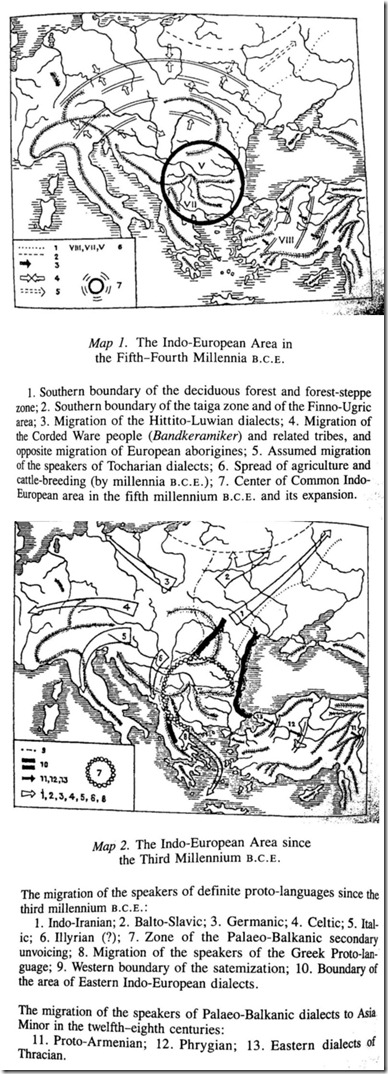 Additionally, in a tour de force he demonstrates that the settlements of all known Indo-European languages can be accommodated easily if such a homeland is accepted, without postulating any long-range population movements except in the case of the Indo-Iranians, to whom IE languages came later.
Additionally, in a tour de force he demonstrates that the settlements of all known Indo-European languages can be accommodated easily if such a homeland is accepted, without postulating any long-range population movements except in the case of the Indo-Iranians, to whom IE languages came later.
D’iakonov [“The Paths of History,” Cambridge University Press, 1999] explained that the Indo-Europeans managed to expand because of their comparative advantage over the more primitive societies that surrounded them: However, I would like to note at once -against the opinions of Maria Gimbutas and other authorities of the nineteenth and twentieth centuries, but in accordance with the later findings of C. Renfrew and J.P. Mallory- that the most ancient Indo-Europeans living in the fifth to third millennia BC, i.e. long before the Iron Age, although already acquainted with horse-drawn chariots, never were nomads. Their movement across Eurasia (presumably via the Balkans) was not a miltary invasion, but a slow spread, caused by a fall in the child mortality rate and, consequently, by an increase in population growth. The reason was that the population speaking the Indo-European proto-language changed to a diet of milk and meat, and had a sufficiently developed agriculture (growing barley, wheat, grapes and vegetables). The surrounding population which lived in the Early Primitive Phase, and thus was by far not so numerous (the population numbers after the change from Primitive to Primitive Communal Phase tend to multiply by two orders of magnitude), adopted the agricultural achievements of the Indo-Europeans, and at the same time also adopted their language; thus the further movements involved not only the original Indo-Europeans but also tribes who had adopted the language and the mores, the latter including the Primitive Communal stage customs which the Indo-Europeans had evolved.
COLIN RENFREW – One of the most respected archaeologists of our time, Colin  Renfrew [“Archaeology and Language : The Puzzle of Indo-European Origins.” ISBN: 0521386756] has argued convincingly that Indo-European languages were spread by farmers who, in search of new land gradually expanded outwards from the Fertile Crescent. He arrived at this conclusion by noting that almost all major language families were spread with farmers. Lord Renfrew has recently slightly modified his previous scheme. Now, he thinks that Proto-Indo-European unity is to be found in the Balkans, in agreement with the opinon of D’iakonov.
Renfrew [“Archaeology and Language : The Puzzle of Indo-European Origins.” ISBN: 0521386756] has argued convincingly that Indo-European languages were spread by farmers who, in search of new land gradually expanded outwards from the Fertile Crescent. He arrived at this conclusion by noting that almost all major language families were spread with farmers. Lord Renfrew has recently slightly modified his previous scheme. Now, he thinks that Proto-Indo-European unity is to be found in the Balkans, in agreement with the opinon of D’iakonov.
<< If we consider that Old Europe cultures precede Anatolian cultures we could assume that the top of the Indo-European tree is the I haplogroup population that spread from Balkans. (Indo) European language has origin thus in Magna (Dacia) Getae covering Romania, Ukrajna, Thracia, Panonia and Greece. The language closest to this is present day Romanian, which is closest to Old Greek and Latina Vulgara. Present day Romanian is the clue to all (Indo) European languages. Getae (Geths) and Goths are same people, the Goths spread from Dacia to France, Italy and Spain, covering areas that were populated from –10kyrBC to –2kyrBC by I populations. The Romans never changed, never latinized the Mediteranian populations they conquered, those people already spoke Koine, Vulgar Latin, Old Dacian – old European ‘Latin’ Languages, the lingua franca of all Roman Empire. J2 farmers coming from Middle Asia were most important by bringing farming technologies, and changed significantly the populations but numerically they were probably absorbed by Old I Europeans. >>
KALEVI WIIK – More recently, Finnish scholar Kalevi Wiik has also proposed Indo-European origins in Southeast Europe. He has expounded his theory on the origins of European peoples in several journal articles and, more recently in his book “Eurooppalaisten juuret” which will be translated to English in the near future. There is also an article written by him on the Web [Europe's Oldest Language] from which the following figures are reproduced.
Map 1: European language distribution at the climax of the Ice Age and the following period, 23,000 to 8,000 BC (Ba = Basque, U = Uralic, X’s = unknown languages)
Map 2: By 5,500 BC speakers of the small languages of central and southern Europe have adopted animal husbandry and the Indo-European language (Ba = Basque, IE = Indo-European, U = Urali)
Wiik, uses linguistic, genetical, archaeological and anthropological data to support his theory. He believes that from 23,000-8,000 BC, Europe was divided into three main regions: Regions Ba and U were inhabited by hunters of large animals which were abundant during that period. They spoke languages related respectively to modern Basque and Finno-Ugric. Region X was inhabited by hunters of smaller animals and was fragmented into many smaller unknown languages that do not survive in modern times. <
By 5,500BC the situation had changed dramatically. The extinction of many large species of animals meant that the economic success of inhabitants of regions Ba and U declined, and they were now reduced to hunting small-game. On the other hand, the inhabitants of area X had adopted the Neolithic way of life of mixed farming and animal husbandry and were becoming economically more successful, growing in numbers. It is here, Wiik argues, in the early farmers diffusing from Greece and the Balkans that Indo-European was born, serving as a lingua franca of the inhabitants of region former X, displacing their older languages and gradually converting linguistically the less successful hunters from regions Ba and U. << As Ice covered most Europe actually Ba and U dissapeared altogether, Europe was re-colonized by I people after 10kyrBC from Balkan area. >>
After 5,500BC this process continued. The languages of the Balkans each assumed a character of their own, because they had abosrbed earlier elements from the many small languages of region X, which persisted for some time. At the periphery of the Indo-European language expansion, the Germanic, Baltic, Slavic, Celtic and Iberian languages were formed; these were Indo-European flavored with many elements from the languages of the hunters: Basque and Finno-Ugric. << Nope, the language differentiations started with the mix of I populations with R1a, R1b and other later migrations. Proto-Germanic(I1) were closer genetically to old Balkan Europe (I2), while R1a formed Slavic peoples and R1b formed Celtic peoples. >>
Eventually, most of Europe was Indo-Europeanized as the Basque and Finno-Ugric speaking hunters eventually adopted IE languages. Only in the periphery of the European continent, in the Iberian peninsula and in Northeast Europe were there strong nuclei of hunters which apparently adopted farming without being linguistically converted. Thus, modern Basque and Finnish speakers are descendants of mostly these early hunters of the Ice Age. Everywhere else, the Indo-European languages which originated in Southeast Europe have won the upper hand. n a more recent English-language article [Kalevi Wiik (2008) “Where Did European Men Come From” Journal of Genetic Genealogy 34(1)] Wiik surveyed Y chromosome variation in Europeans and in accordance with his earlier position stated (p. 82) that “The men of the Balkan refuge were more likely than those of any other to have spoken an early form of the Indo-European language.”
Map 3: European language distribution, 5,500-3,000 BC: the Indo-European languages have begun to spread among the hunter-fisher-gatherers of northern Europe (B = Baltic, C = Celtic, FU = Finno-Ugrian, G = Germanic, I = Iberian, IE = Indo-European, S = Slavic)
Map 4: European language distribution, present day (Ba = Basque, C = Celtic, FU = Finno-Ugrian, G = Germanic, R = Romance, S = Slavic)
GRAY AND ATKINSON – The theory of Indo-European origins in Southeast Europe from an earlier Anatolian source has received additional confirmation recently. Using a methodology similar to that used in evolutionary biology, Gray and Atkinson [“Language-tree divergence times support the Anatolian theory of Indo-European origin,” Nature 426, 435-439] compared 95 present and past languages of the Indo-European family based on a list of 200 basic terms for each.
The main idea of this innovative work is that languages that diverge from a common source initially tend to have similar vocabularies, but as time progresses, new terms replace older ones, and thus the intersection between the vocabularies of the languages is reduced. This principle can be used to determine the “branching pattern” of the language family, as well as to time the various splits in the tree. The authors were able to vary many parameters of the input automatically, thus taking into account the many uncertainties of this difficult problem in a systematic manner.
The results of all analyses, irrespective of the initial assumptions were very robust: We test two theories of Indo-European origin: the ‘Kurgan expansion’ and the ‘Anatolian farming’ hypotheses. The Kurgan theory centres on possible archaeological evidence for an expansion into Europe and the Near East by Kurgan horsemen beginning in the sixth millennium BP7, 8. In contrast, the Anatolian theory claims that Indo-European languages expanded with the spread of agriculture from Anatolia around 8,000–9,500 years BP9. In striking agreement with the Anatolian hypothesis, our analysis of a matrix of 87 languages with 2,449 lexical items produced an estimated age range for the initial Indo-European divergence of between 7,800 and 9,800 years BP. These results were robust to changes in coding procedures, calibration points, rooting of the trees and priors in the bayesian analysis.
<< Why not choose the middle solution, the area BETWEEN Kurgan origin and Anatolian origin. The origin of (Indo) Europeans is In Europe, in Old Europe, in the Balkans, related to I haplogroup which re-colonized all Europe after last Ice Age!! Writing appeared first in Europe – Vinca script then civilazation spread to later Summer cultures. Why not consider this alternative, logical and consistent with chronology of cultures. Romanian language is the cornerstone of all (Indo) european languages, it is oldest, lexically richest, with best preserved old archaic terms not found in Latin but found in Old Medieval French for example, most homogenius on large theritory, linguistically closest to Old Koine Greek and Old Vulgar Latin. Old Valachian languge was spoken in all Balkans, mostly north of Jiricek line, Magna Moldavia spread before Turkish and Russian expansion in north of Black Sea up to Crimea. >>
The branching pattern is also in agreement with an independent linguistic analysis of Indo-European languages [Rexova, K., Frynta, D. & Zrzavy, J. “Cladistic analysis of languages: Indo-European classification based on lexicostatistical data.”Cladistics 19, 120–127 (2003)]. The estimated times strikingly confirm the Neolithic dispersal theory, showing a divergence of Indo-European languages from Anatolian ones, with an independent branching of the mysterious Tocharian language which spread eastwards, and the descent of all other languages from what is almost certain to be a Balkan homeland:
Consensus tree and divergence-time estimates. a, Majority-rule consensus tree based on the MCMC sample of 1,000 trees; b, initial assumption set using all cognate information and most stringent constraints; c, conservative cognate coding with doubtful cognates excluded; d, all cognate sets with minimum topological constraints; e, missing data coding with minimum topological constraints and all cognate sets. Shaded bars represent the implied age ranges under the two competing theories of Indo-European origin: blue, Kurgan hypothesis; green, Anatolian farming hypothesis. The relationship between the main language groups in the consensus tree for each analysis is also shown, along with posterior probability values. [Click on the Picture for a larger version.]
http://vieilleeurope.wordpress.com/2011/05/27/restart-of-europe-after-last-ice-age/
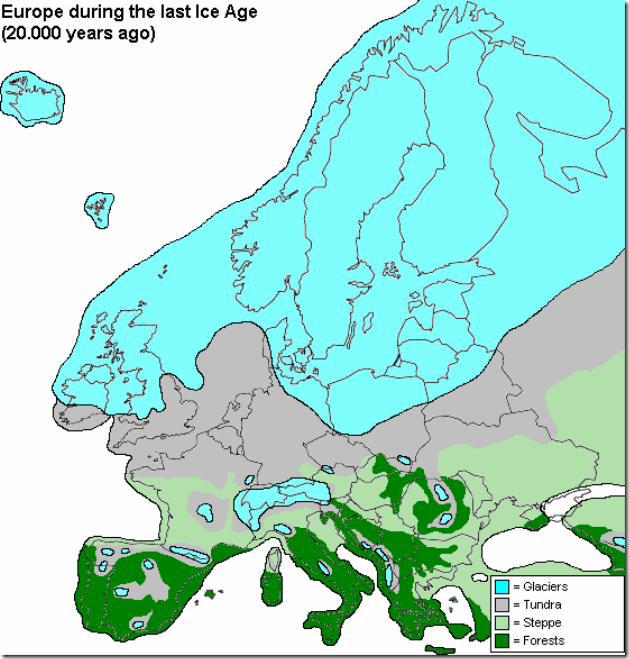

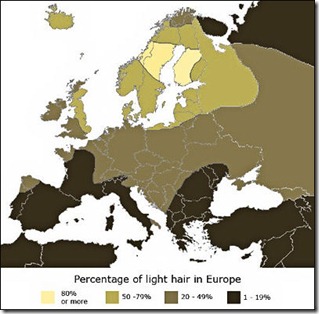




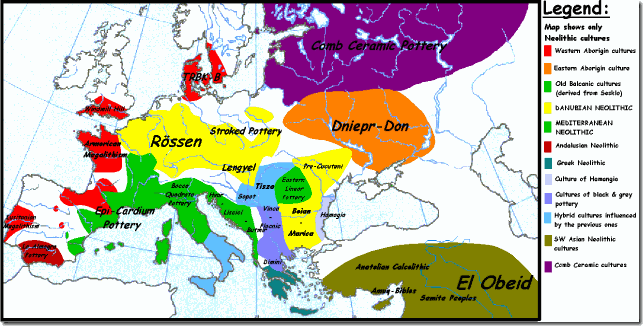
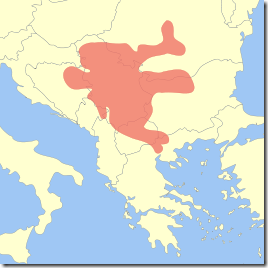

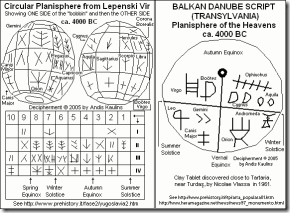
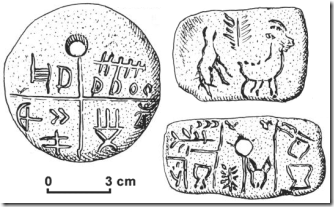


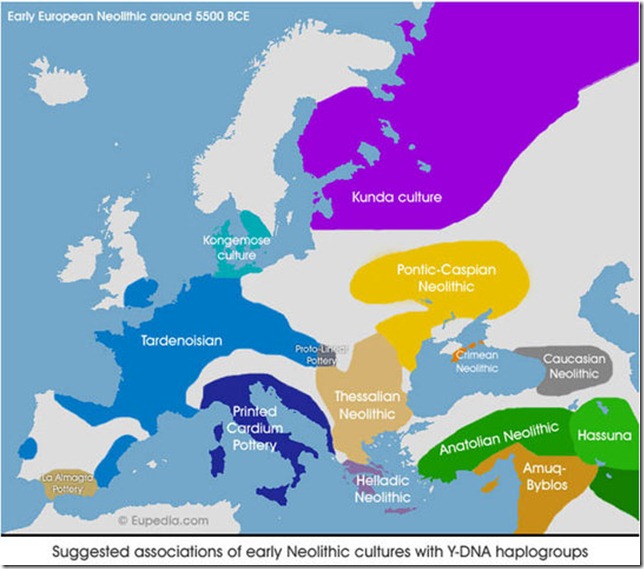

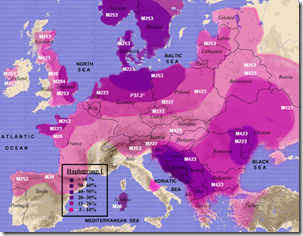
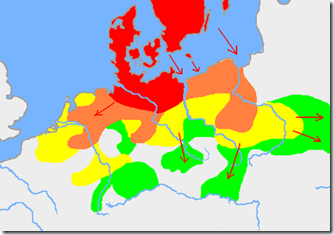


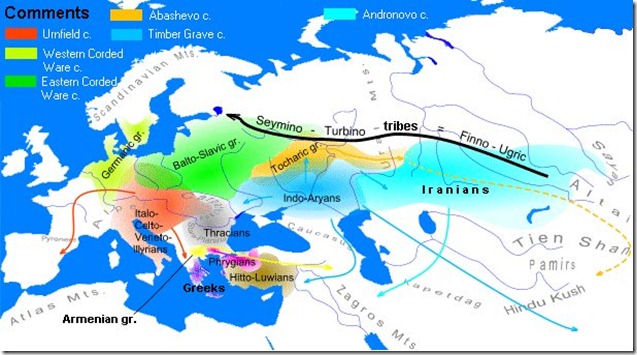
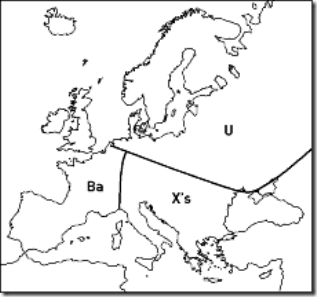
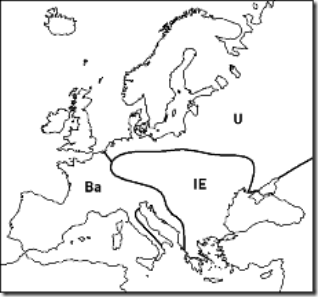

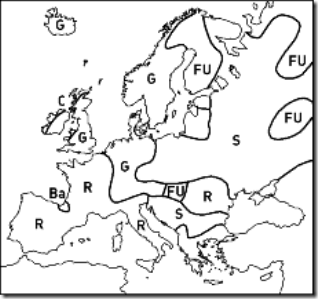

Long article
ReplyDelete